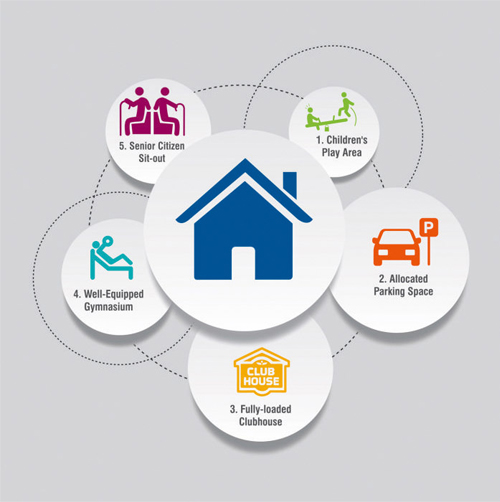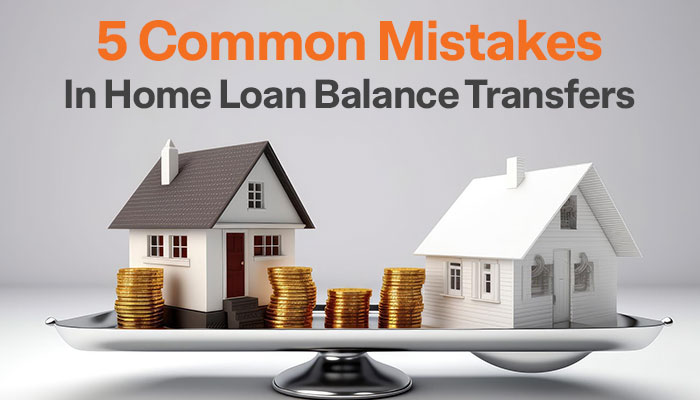A Comprehensive Guide: Ready-to-Move-in Property Vs. Under-Construction Property

Choosing between an Under-Construction property and a Ready-to-move-in property in India requires some critical thinking. The amount of money you are willing to invest and your emotional values play a vital role in the decision-making process, especially if you are a first-time home buyer.

Factors to consider before choosing between Under-Construction and Ready-to-Move-In Properties
1. Timing: Figure out how urgently you need a place to live and how much time you have available. If you need a place to live right away, it's best to choose a Ready-to-move-in apartment. Did you know that you can now have your home loan sanctioned in less than a day? Check out IIFL Home Loans for a single-window solution for affordable housing finance!

If you have enough time and the ability to be flexible, choosing an Under-Construction property could be a good idea.
2. Budget: Assess your financial situation. Ready-to-move-in properties often have a higher price due to their immediate availability, while Under-Construction properties may be more affordable. Consider the overall cost, including any additional expenses for loan interest, rent, or accommodation during the construction period.
3. Risk tolerance: Under-Construction properties come with a certain level of uncertainty, such as construction delays or changes in the final product. However, if you prefer a hassle-free purchase, a Ready-to-move-in property provides more certainty.
4. Quality and customisation: Under-Construction properties offer the advantage of firsthand inspection, quality assessment, envisioning the layout, and making informed decisions, while Ready-to-move-in properties may have limited customisation control, relying on builder promises and sample flats as references.
5. Financing options: Banks and financial institutions help to evaluate the loan options, interest rates, and down payment of your preferred choice. You may want to check out IIFL Home Loans, which offers affordable financing for new property purchases, constructions, as well as renovations.
6. Infrastructure and location: Thoroughly research the neighbourhood, amenities, and proximity to essential facilities such as schools, hospitals, transportation, and supermarkets, as they impact property value.

Pros and Cons of Ready-to-Move-In Properties and Under-Construction Properties
| Under-Construction Property | Ready-to-Move-In Property | |
| Advantages |
|
|
| Disadvantages |
|
|
Bottom Line
The choice between an Under-Construction property and a Ready-to-move-in property in India depends on individual preferences, circumstances, and priorities, with Ready-to-move-in offering immediate possession and quality assurance, while Under-Construction provides affordability, potential appreciation, and customisation options.
Further, if you are considering external financing, whether it’s a home loan for an Under-Construction property or a Ready-to-move-in property, compare different home loan options, including interest rates, eligibility criteria, and tax benefits, as these vary across lenders. Consult with financial advisors to make an informed decision or check out IIFL Home Loans’ website for more details.
FAQs
1. What is a Ready-to-move-in property?
Ready to move-in property is that property that is complete and is ready for occupancy. You can start living in a ready-to-move-in house as soon as you buy it.
2. How do I apply for a home loan for an Under-Construction property and a Ready-to-move-in property?
-
Visit the IIFL Home Loans website and check your eligibility.
-
Fill out the application form.
-
Arrange the documents required.
-
Submit the documents and the application form.
-
Post verification, you will have your loan sanctioned.
3. What are the things to check when choosing a property under construction?
-
The legal status of the property
-
RERA (Real Estate Regulatory Authority) registration
-
Environmental clearance
-
Financial credibility of the builder
-
Applicable home loan options
4. How do I avail a home loan for refurbishments and improvements?
IIFL Home Loans offers a specialised plan called Home Improvement Loan, which finances all your home improvement needs. The plan covers remodelling, flooring, tiling, home extension, cost of contractors, raw materials, and interior designers.
5. What benefits do Ready-to-move-in flats have over Under-Construction flats?
-
You get to assess the locality, the neighbourhood, and all the amenities in the area before purchasing.
-
Delayed possession on account of a developer’s misgivings won't be an issue to worry about.
Tags
Disclaimer: The information contained in this post is for general information purposes only. IIFL Home Finance Limited (including its associates and affiliates) ("the Company") assumes no liability or responsibility for any errors or omissions in the contents of this post and under no circumstances shall the Company be liable for any damage, loss, injury or disappointment, etc. suffered by any reader. All information in this post is provided "as is", with no guarantee of completeness, accuracy, timeliness, or of the results, etc. obtained from the use of this information, and without warranty of any kind, express or implied, including, but not limited to warranties of performance, merchantability, and fitness for a particular purpose. Given the changing nature of laws, rules, and regulations, there may be delays, omissions, or inaccuracies in the information contained in this post. The information on this post is provided with the understanding that the Company is not herein engaged in rendering legal, accounting, tax, or other professional advice and services. As such, it should not be used as a substitute for consultation with professional accounting, tax, legal or other competent advisers. This post may contain views and opinions which are those of the authors and do not necessarily reflect the official policy or position of any other agency or organization. This post may also contain links to external websites that are not provided or maintained by or in any way affiliated with the Company and the Company does not guarantee the accuracy, relevance, timeliness, or completeness of any information on these external websites. Any/ all (Home/ Loan Against Property/ Secured Business Loan/ Balance Transfer/ Home Improvement Loan/ NRI Home Loan/ Home Loan for Uniformed Services) loan product specifications and information that may be stated in this post are subject to change from time to time, readers are advised to reach out to the Company for current specifications of the said (Home/ Loan Against Property/ Secured Business Loan/ Balance Transfer/ Home Improvement Loan/ NRI Home Loan/ Home Loan for Uniformed Services) loan.
 Login
Login






















